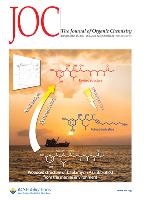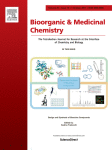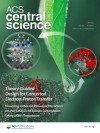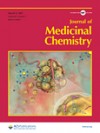Successful competition for metals by pathogenic bacteria from the host is an important factor in the establishment of a bac-terial infection. Staphylopine was discovered and functionally evaluated as a novel type of metallophore that Staphylococ-cus aureus employs to acquire multiple divalent transition metals. Aspergillomarasmine A (AMA), with a similar structure to staphylopine, was recently identified as an inhibitor of metallo-尾-lactamases NDM-1 and VIM-2, which suggests AMA has a similar metal chelation property as staphylopine. Herein, we report a unified approach using Mitsunobu reaction as a key step to accomplish the concise and efficient total syntheses of staphylopine and AMA. We also elucidate the similar broad-spectrum metal chelation properties between
Narita, K.; Sato, H.; Minami, A.; Kudo, K.; Gao, L.; Liu, C.; Ozaki, T.; Kodama, M.; Lei, X.; Taniguchi, T.; Monde, K.; Yamazaki, M.; Uchiyama, M.; Oikawa, H
Org. Lett. 2017, 19, 6696-6699.
Heterologous expression of four clade-A bifunctional terpene synthases (BFTSs), giving di/sesterterpenes with unique polycyclic carbon skeletons such as sesterfisherol, enabled the isolation of the sesterterpenes Bm1, Bm2, Bm3, and Pb1. Their structures suggested that formation of the products occurs via various diastereomeric carbocation intermediates, allowing the proposal that clade-A BFTSs catalyze three-step cyclizations using several stereofacial combinations of allylic cation-olefin pairs in the corresponding intermediates to generate various stereoisomers.
The β-lactam antibiotic resistance of Gram-negative bacteria has shown to be a critical global health problem. One of the primary reasons for the drug resistance is the existence of β-lactamases especially metallo-β-lactamases such as New Delhi metallo-β-lactamase (NDM-1) and Verona Integron-encoded metallo-β-lactamase (VIM-2). The fungal natural product Aspergillomarasmine A (AMA) has proven to be a promising inhibitor of NDM-1 and VIM-2 both in vitro and in vivo. Seven new analogues of AMA were synthesized by utilizing different strategies. The biological evaluation of these analogues was performed to study the structure-activity relationship of AMA both in vitro and in vivo. Remarkably, the lead compound 4 showed synergistic effect in combination with Meropenem to overcome the antibiotic resistance of the Gram-negative bacteria such as K. pneumoniae (BAA-2146) expressing NDM-1.
We report herein our synthetic efforts towards the divergent syntheses of (−)‐huperzine Q (1), (+)‐lycopladine B (2), (+)‐lycopladine C (3), and (−)‐lycopladine D (4). The 10‐step total synthesis of (−)‐huperzine Q (1) and the first total syntheses of (+)‐lycopladines B (2) and C (3) were accomplished through a series of cascade reactions. Our approach involved a Michael addition/aldol/intramolecular C‐alkylation sequence to forge the 6/9 spirocycle ring, and this was followed by an ethylene‐accelerated carbonyl–olefin metathesis to construct the common 6/5/9 ring system. Finally, late‐stage enamine bromofunctionalization enabled us to access (−)‐huperzine Q (1), (+)‐lycopladine B (2), and (+)‐lycopladine C (3), and a tandem C4‐epimerization/retro‐Claisen condensation furnished (−)‐4‐epi‐lycopladine D (63).
In this issue of Cell Chemical Biology, Mart?′n-Gago et al. (2017a) disclose a new strategy for the selective covalent?targeting of binding site carboxylic acids within the proteome using the isoxazolium salt as a warhead.?This discovery paves the way for developing newprotein ligation methods as well as covalent drug candidates. http://www.cell.com/cell-chemical-biology/pdf/S2451-9456(17)30143-5.pdf
ABSTRACT: Bile acids (BAs) are a family of endogenous metabolites synthesized from cholesterol in liver and modified by microbiota in gut. Being amphipathic molecules, the major function of BAs is to help with dietary lipid digestion. In addition, they also act as signaling molecules to regulate lipid and glucose metabolism as well as gut microbiota […]
Prof. Lei has served as a guest editor to compile a special Symposium-In-Print on Bioorganic & Medicinal Chemistry to celebrate his 2017 Tetrahedron Young Investigator Award. http://www.sciencedirect.com/science/journal/09680896/25/11
Abstract Glycolipids are important structural components of biological membranes and perform crucial functions in living systems, including signaling transduction and interaction with extracellular environment. However, the mechanistic exploration of glycolipids in vivo is challenging because they are not genetically encoded. Herein, we designed and synthesized a series of bifunctional monogalactosyldiacylglycerol (MGDG) probes as a model […]
Abstract: On the basis of its essential role in driving inflammation and disease pathology, cell necrosis has gradually been verified as a promising therapeutic target for treating atherosclerosis, systemic inflammatory response syndrome (SIRS), and ischemia injury, among other diseases. Most necrosis inhibitors targeting receptor-interacting protein 1 (RIP1) still require further optimization because of weak potency […]
To improve chemical cross-linking of proteins coupled with mass spectrometry (CXMS), we developed a lysine-targeted enrichable cross-linker containing a biotin tag for affinity purification, a chemical cleavage site to separate cross-linked peptides away from biotin after enrichment, and a spacer arm that can be labeled with stable isotopes for quantitation. By locating the flexible proteins […]
-

-
-

-
-

-

-

-

-

-

Total Syntheses of Natural Metallophores Staphylopine and Aspergillomarasmine A
Zhang, J.; Wang, S.; Bai, Y.; Guo, Q.; Zhou, J.; Lei, X.*
J. Org. Chem. 2017, 82, 13643-13648.
Successful competition for metals by pathogenic bacteria from the host is an important factor in the establishment of a bac-terial infection. Staphylopine was discovered and functionally evaluated as a novel type of metallophore that Staphylococ-cus aureus employs to acquire multiple divalent transition metals. Aspergillomarasmine A (AMA), with a similar structure to staphylopine, was recently identified as an inhibitor of metallo-尾-lactamases NDM-1 and VIM-2, which suggests AMA has a similar metal chelation property as staphylopine. Herein, we report a unified approach using Mitsunobu reaction as a key step to accomplish the concise and efficient total syntheses of staphylopine and AMA. We also elucidate the similar broad-spectrum metal chelation properties between
Focused Genome Mining of Structurally Related Sesterterpenes: Enzymatic Formation of Enantiomeric and Diastereomeric Products
Narita, K.; Sato, H.; Minami, A.; Kudo, K.; Gao, L.; Liu, C.; Ozaki, T.; Kodama, M.; Lei, X.; Taniguchi, T.; Monde, K.; Yamazaki, M.; Uchiyama, M.; Oikawa, H
Org. Lett. 2017, 19, 6696-6699.
Heterologous expression of four clade-A bifunctional terpene synthases (BFTSs), giving di/sesterterpenes with unique polycyclic carbon skeletons such as sesterfisherol, enabled the isolation of the sesterterpenes Bm1, Bm2, Bm3, and Pb1. Their structures suggested that formation of the products occurs via various diastereomeric carbocation intermediates, allowing the proposal that clade-A BFTSs catalyze three-step cyclizations using several stereofacial combinations of allylic cation-olefin pairs in the corresponding intermediates to generate various stereoisomers.
Synthesis and biological evaluation of Aspergillomarasmine A derivatives as novel NDM-1 inhibitor to overcome antibiotics resistance.
Zhang, J.; Wang, S.; Wei, Q.; Guo, Q.; Bai, Y.; Yang, S.; Song, F.; Zhang, L.; Lei, X
Bioorg. Med. Chem. 2017, 25, 5133-5141.
The β-lactam antibiotic resistance of Gram-negative bacteria has shown to be a critical global health problem. One of the primary reasons for the drug resistance is the existence of β-lactamases especially metallo-β-lactamases such as New Delhi metallo-β-lactamase (NDM-1) and Verona Integron-encoded metallo-β-lactamase (VIM-2). The fungal natural product Aspergillomarasmine A (AMA) has proven to be a promising inhibitor of NDM-1 and VIM-2 both in vitro and in vivo. Seven new analogues of AMA were synthesized by utilizing different strategies. The biological evaluation of these analogues was performed to study the structure-activity relationship of AMA both in vitro and in vivo. Remarkably, the lead compound 4 showed synergistic effect in combination with Meropenem to overcome the antibiotic resistance of the Gram-negative bacteria such as K. pneumoniae (BAA-2146) expressing NDM-1.
Divergent Total Syntheses of (-)-Huperzine Q, (+)-Lycopladine B, (+)-Lycopladine C and (-)-epi-Lycopladine D
Hong, B.; Hu, D.; Wu, J.; Zhang, J.; Li, H.; Pan, Y.; Lei, X.
Chem. Asian J. 2017, 12, 1557-1567. (VIP paper)
We report herein our synthetic efforts towards the divergent syntheses of (−)‐huperzine Q (1), (+)‐lycopladine B (2), (+)‐lycopladine C (3), and (−)‐lycopladine D (4). The 10‐step total synthesis of (−)‐huperzine Q (1) and the first total syntheses of (+)‐lycopladines B (2) and C (3) were accomplished through a series of cascade reactions. Our approach involved a Michael addition/aldol/intramolecular C‐alkylation sequence to forge the 6/9 spirocycle ring, and this was followed by an ethylene‐accelerated carbonyl–olefin metathesis to construct the common 6/5/9 ring system. Finally, late‐stage enamine bromofunctionalization enabled us to access (−)‐huperzine Q (1), (+)‐lycopladine B (2), and (+)‐lycopladine C (3), and a tandem C4‐epimerization/retro‐Claisen condensation furnished (−)‐4‐epi‐lycopladine D (63).
Covalent Probe Finds Carboxylic Acid
Jones, A.; Zhang, X.; Lei, X.*
Cell Chem. Biol. 2017, 24, 537-538
In this issue of Cell Chemical Biology, Mart?′n-Gago et al. (2017a) disclose a new strategy for the selective covalent?targeting of binding site carboxylic acids within the proteome using the isoxazolium salt as a warhead.?This discovery paves the way for developing newprotein ligation methods as well as covalent drug candidates. http://www.cell.com/cell-chemical-biology/pdf/S2451-9456(17)30143-5.pdf
Chemoproteomic Profiling of Bile Acid Interacting Proteins
Zhuang, S.; Li, Q.; Cai, L.; Wang, C.*; Lei, X.*
ACS Cent. Sci. 2017, 3, 501-509
ABSTRACT: Bile acids (BAs) are a family of endogenous metabolites synthesized from cholesterol in liver and modified by microbiota in gut. Being amphipathic molecules, the major function of BAs is to help with dietary lipid digestion. In addition, they also act as signaling molecules to regulate lipid and glucose metabolism as well as gut microbiota […]
Small Molecule Enabled Chemical Biology and Drug Discovery
Lei, X.
Bioorganic & Medicinal Chemistry 25 (2017) 2815–2816
Prof. Lei has served as a guest editor to compile a special Symposium-In-Print on Bioorganic & Medicinal Chemistry to celebrate his 2017 Tetrahedron Young Investigator Award. http://www.sciencedirect.com/science/journal/09680896/25/11
Exploring the Binding Proteins of Glycolipids with Bifunctional Chemical Probes
Liu, X.; Dong, T.; Zhou, Y.; Huang, N.; Lei, X.*
Angew. Chem. Int. Ed. 2016, 55, 14330-14334.
Abstract Glycolipids are important structural components of biological membranes and perform crucial functions in living systems, including signaling transduction and interaction with extracellular environment. However, the mechanistic exploration of glycolipids in vivo is challenging because they are not genetically encoded. Herein, we designed and synthesized a series of bifunctional monogalactosyldiacylglycerol (MGDG) probes as a model […]
Discovery of a Highly Potent, Selective, and Metabolically Stable Inhibitor of Receptor-Interacting Protein 1 (RIP1) for the Treatment of Systemic Inflammatory Response Syndrome
Ren, Y.; Su, Y.; Su, L.; He, S.; Meng, L.; Liao, D.; Liu, X.; Ma, Y.; Liu, C.; Li, S.; Ruan, H.; Lei, X.; Wang, X.*; Zhang, Z.*
J. Med. Chem. 2017, 60, 972-986
Abstract: On the basis of its essential role in driving inflammation and disease pathology, cell necrosis has gradually been verified as a promising therapeutic target for treating atherosclerosis, systemic inflammatory response syndrome (SIRS), and ischemia injury, among other diseases. Most necrosis inhibitors targeting receptor-interacting protein 1 (RIP1) still require further optimization because of weak potency […]
Trifunctional Cross-Linker for Mapping Protein-Protein Interaction Networks and Comparing Protein Conformational States
Tan, D.; Li, Q.; Zhang, M.; Liu, C.; Ma, C.; Zhang, P.; Ding, Y.; Fan, S.; Tao, L.; Yang, B.; Li, X.; Ma, S.; Liu, J.; Feng, B.; Liu, X.; Wang, H.; He, S.; Gao, N.; Ye, K.; Dong, M.*; Lei, X.*
eLife 2016; 5:e12509
To improve chemical cross-linking of proteins coupled with mass spectrometry (CXMS), we developed a lysine-targeted enrichable cross-linker containing a biotin tag for affinity purification, a chemical cleavage site to separate cross-linked peptides away from biotin after enrichment, and a spacer arm that can be labeled with stable isotopes for quantitation. By locating the flexible proteins […]